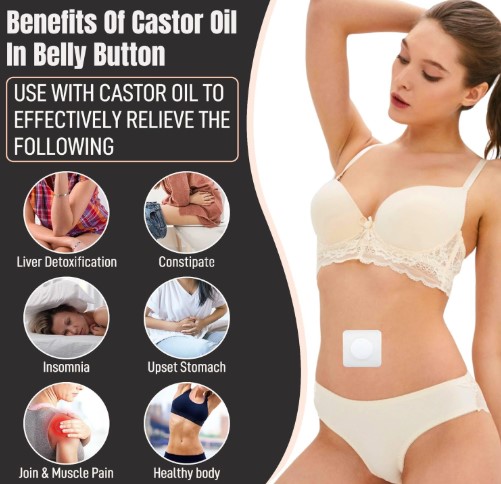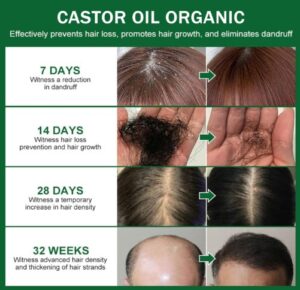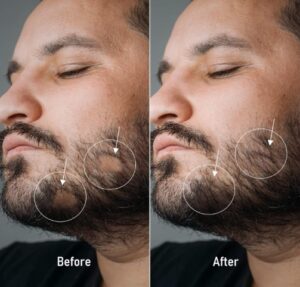Castor Oil in Belly Button: What Science and Tradition Say

Have you ever heard that applying castor oil in the belly button can improve your health, skin, or even hair? It sounds unusual, but this practice has roots in traditional medicine. Let’s explore what’s true, what’s myth, and how castor oil really works—especially when it comes to hair growth, skin care, and natural remedies.
If you’re curious about other compounds studied for hair, check our article on PP405 hair loss supplements.
Why castor oil in the belly button?
Traditionally, the belly button (navel) has been seen as a central point in the body. Ayurvedic and folk practices suggest that applying oils here can distribute their effects through subtle energy pathways. While modern science doesn’t fully support these claims, many people report benefits such as:
- Moisturizing dry skin around the navel.
- Improved relaxation and sleep when used at night.
- Perceived digestive comfort when combined with gentle massage.
Castor oil is thick, rich in ricinoleic acid, and known for anti-inflammatory and antimicrobial properties. Using castor oil in belly button routines may not be a miracle cure, but it can be a safe and soothing ritual.
Will castor oil grow hair?

Will castor oil grow hair
One of the most popular claims is that castor oil helps with hair growth. People often massage it on the scalp, eyebrows, eyelashes, and even apply it through belly button rituals. But what does the evidence say?
- Scientific evidence: There are no clinical trials proving that castor oil directly increases hair growth. What it can do is improve scalp moisture, reduce breakage, and support healthier hair appearance.
- Moisture barrier: Castor oil coats hair shafts, reducing water loss and protecting against environmental damage.
- Circulation: Massage with castor oil may improve blood flow, indirectly supporting follicles.
So, while castor oil may not turn thin areas into thick beards or hairlines, it can improve the quality and resilience of existing hair. This explains why many people swear by it for healthier strands.
To compare castor oil’s effects with modern treatments, read our review of Baricitinib for alopecia.
Can castor oil go bad?
Yes—like any natural oil, castor oil can expire. Here’s what you need to know:
- Shelf life: Typically 1–2 years when stored in a cool, dark place.
- Signs of spoilage: Rancid smell, cloudy appearance, or change in texture.
- Storage tips: Keep in a tightly sealed, dark glass bottle away from heat and sunlight.
Expired castor oil may irritate the skin or simply lose potency. Always check labels and avoid using products past their expiration date.
Castor oil for packs
Another traditional practice is using castor oil packs. This involves soaking a piece of cloth in castor oil, applying it to the skin (often over the abdomen), and covering it with heat. Advocates claim it helps with:
- Liver detoxification support.
- Reducing menstrual cramps.
- Easing constipation and digestive discomfort.
- Joint pain relief.
While research is limited, castor oil packs may provide comfort due to warmth, pressure, and oil penetration. Always use clean cloths, moderate heat, and avoid open wounds or broken skin.
How to make a castor oil pack
- Take a clean cotton or wool flannel cloth.
- Saturate with 2–3 tablespoons of castor oil.
- Place over the desired area (abdomen is common).
- Cover with plastic wrap and a heating pad or hot water bottle.
- Relax for 30–60 minutes, then clean skin thoroughly.
Castor oil and hair
Beyond belly button applications, castor oil is famous for its use on scalp and hair. Benefits include:
- Scalp hydration: Reduces dryness and flaking.
- Antimicrobial effects: May help balance scalp bacteria and fungi.
- Shine and smoothness: Creates a glossy look on hair strands.
How to use castor oil for hair
- Warm a small amount of oil in your hands.
- Massage into scalp for 5–10 minutes.
- Distribute through mid-lengths and ends.
- Leave overnight (protect pillow with towel) or at least 1 hour.
- Wash out with gentle shampoo; repeat 1–2 times weekly.
For advanced science-based approaches, don’t miss our article on KROX20 protein in hair growth.
Precautions and side effects
Castor oil is generally safe, but keep these points in mind:
- Allergies: Rare, but always do a patch test before first use.
- Pregnancy: Oral castor oil is traditionally used to induce labor and should be avoided without medical advice.
- Topical irritation: Thick oil may clog pores in sensitive individuals; avoid overuse on acne-prone skin.
FAQ on castor oil in belly button
Does applying castor oil in belly button improve health?
Scientific proof is limited. Benefits are mostly anecdotal, but hydration and relaxation are real.
Will castor oil grow hair through belly button use?
Unlikely—hair growth results mainly come from direct scalp or eyebrow application, not navel absorption.
Can I combine castor oil packs with belly button oiling?
Yes, but avoid overuse. Focus on comfort, not miracle cures.
How often should I apply castor oil in the navel?
1–3 times weekly is common. Consistency matters more than frequency.
Final thoughts
Castor oil in belly button routines combine tradition, self-care, and natural wellness. While it’s not a miracle solution, it can hydrate, relax, and support your health rituals. For hair, castor oil shines more when applied directly to scalp and strands. Whether you use it in packs, oils, or belly button applications, the key is consistency, moderation, and realistic expectations.

